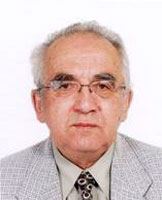The search of ways to prevent destructive effects of lightning has been thrilling people for a long time. For the past 250 years, installation of lightning rods is considered to be one of the most effective methods of lightning protection. Their use is based on the assumption that there is a high probability of a lightning strike into the highest element of the building. After what its channel will be intercepted by the grounded metal rod or wire.
But every rule has exceptions. As for the lightning rods, they may not always provide a reliable protection against lightning strikes. Breakthroughs of lightning to the protected object still happen. For today, the main question of interest of lightning protection specialists comes down to the development of technique with which you can reliably estimate the number of lightning breakthroughs to the protected object. Which in turn will create an effective protection system.
The physical aspects of lightning protection
The reasons, why lightning strikes into a particular point are studied well enough. Initially, lightning descending from the clouds begins its formation no matter what processes occur in real time on the ground surface. However, when a counter leader channel, which originates in the atmosphere, at the highest point of the ground construction, a lightning direction begins. In this case, the charges of the thunderclour and the charge transferred to the ground surface are the source of the electric field. The height of the lightning is determined at the time when the counter leader starts. The place, where lightning will strike depends on the progress of counter leaders.
Difficulties in the calculations
It is quite difficult to make a precise calculation of the point of a lightning strike on the basis of such ideas. There are no precise parameters on the basis of which it will be done. In this case, there is no way to determine the value of the electric potential point in space, from which the downward lightning will originate. This parameter can strongly change under the influence of external factors.
In addition, there is no way to accurately determine the trajectory of lightning, the number of branches formed and the coordinates of the leaders starting from the onground facilities. As for the trajectory of counter leaders, the speed with which they will progress and the value of the transferred charge, then it doesn't seem possible to immediately get accurate data for the calculations. Thus, it is practically impossible to obtain accurate information about how effective the lightning protection with the use of lightning rods will be. The results of such calculation should be considered approximate.
The formal approach to the calculation of lightning protection efficiency
The simplified calculation methods based on such a concept as protective zone. It is some space in the vicinity of a lightning rod. It is believed that the probability of a lightning strike in the protection zone is small and depends on the parameters of the lightning rod used.
The dimensions of the protection zones have been accepted after a series of laboratory tests on small models. Long spark played the role of lightning in the experiments. Despite the fact that the results can vary greatly on the scale of the model used, mentioning of the protection zones is still present in all the existing regulations on lightning protection.
For this reason, methods of evaluation and comparison of the dependency of the results obtained on the sizes of the installed lightning rods is interest to practitioners, and theoreticians.
The material was created on the basis of an article by Professor Eduard Meerovich Bazelyan "How to choose lightning rods (introduction)?".
See also:
- Useful materials for grounding and lightning protection designers (articles, manuals, guidelines)
- Design of grounding and lightning protection (projects in DWG and PDF formats)
- Webinars for designers and electricians with the leading experts
- Become a partner and join the ZaNDZ.com Club of Experts
- Equipment for grounding and lightning protection
Related Articles:
 Lightning protection of residential and public buildings - answers to frequently asked questions in the design
Lightning protection of residential and public buildings - answers to frequently asked questions in the design
 Lightning Protection of Large Territories: Parks, Grounds, Plant Territories. Page 1
Lightning Protection of Large Territories: Parks, Grounds, Plant Territories. Page 1
 Lightning Protection of Large Territories: Parks, Grounds, Plant Territories. Page 2
Lightning Protection of Large Territories: Parks, Grounds, Plant Territories. Page 2
 Lightning Protection of Large Territories: Parks, Grounds, Plant Territories. Page 3
Lightning Protection of Large Territories: Parks, Grounds, Plant Territories. Page 3

